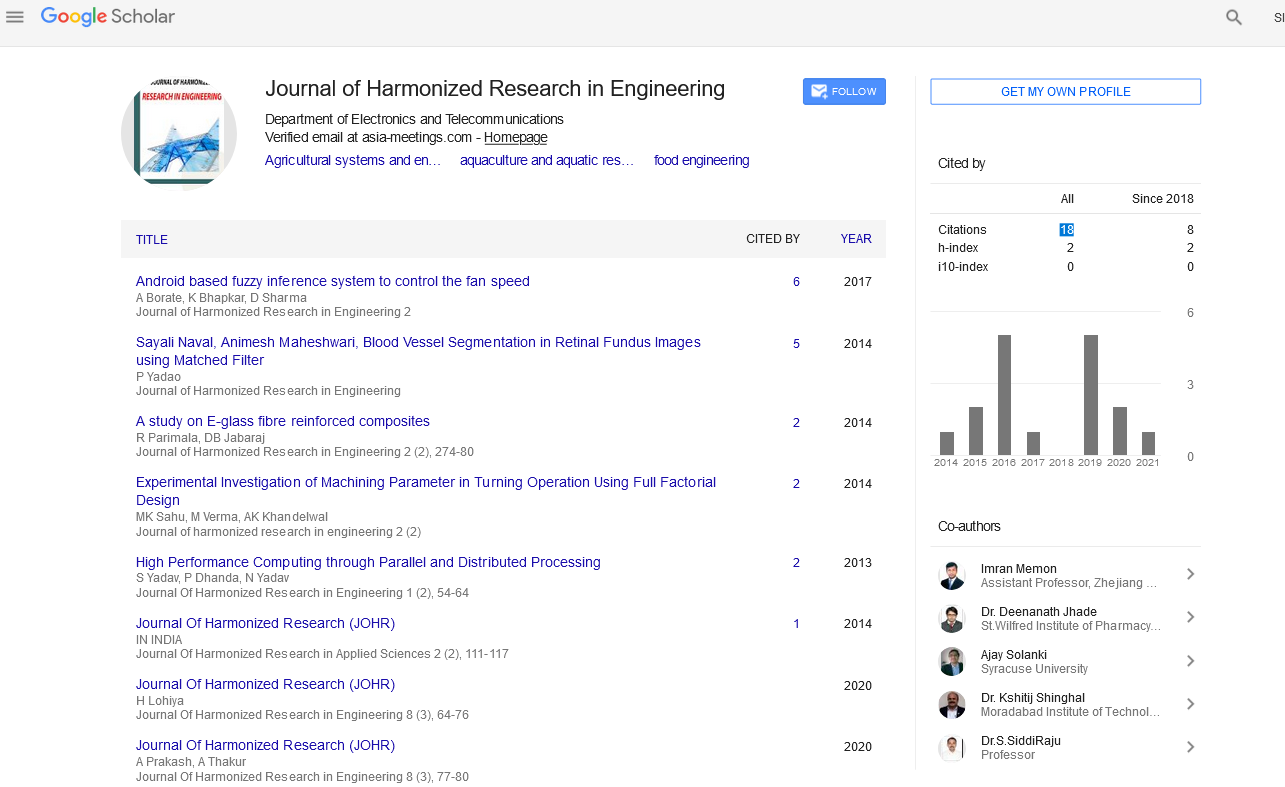Editorial - (2021) Volume 9, Issue 2
EDITORIAL NOTE ON IOT APPLICATIONS
Milon Chin*Received: Dec 06, 2021
Editorial
The Internet of Things (IoT) represents a physical object with sensors, processing capabilities, software, and other technologies that connect and exchange data with other devices and systems over the Internet and other communication networks.
IOT Applications
Organizational applications
Medical and healthcare: The Internet of Medical Things (IoMT) is an IoT application for medical and health related purposes, data collection, and analytics for research and monitoring. IoMT is known as “smart health care”. This is a technology for building a digitized medical system that combines available medical resources and medical services.
IoT devices can be used to enable remote monitoring and emergency notification systems. These health monitoring devices range from blood pressure and heart rate monitors to advanced devices that can monitor specialized implants such as pacemakers, Fitbit electronic wristbands, and advanced hearing aids. Some hospitals have begun implementing “smart beds” that allow them to know when they are occupied and when patients are about to wake up. It can also be self-adjusting for the patient to receive appropriate pressure and support without manual intervention from the nurse.
Transportation: The IoT supports the integration of communication, control, and information processing between various transportation systems. IoT applications extend to all aspects of the transportation system. Dynamic interactions between these components of the transportation system enable vehicle-to-vehicle and in-vehicle communication, intelligent traffic control, intelligent parking, electronic toll systems, logistics and vehicle management, vehicle control, security and fault support.
Industrial applications
Manufacturing: The IoT can connect a variety of manufacturing devices with sensors, identification, processing, communication, activation, and networking capabilities. With network control and manufacturing plant management, asset and status management, or manufacturing process control, you can use the IoT for industrial applications and intelligent manufacturing. Intelligent IoT systems enable rapid manufacturing and optimization of new products and rapid response to product requirements.
Agriculture: There are numerous IoT applications in farming, including data collection on temperature, precipitation, humidity, wind speed, pest invasion, and soil content. You can use this data to automate agricultural technology, make informed decisions to improve quality and quantity, minimize risk and waste, and reduce plant management efforts. For example, farmers will be able to remotely monitor soil temperature and humidity, and IoT-acquired data can be applied to precision fertilization programs. The overall goal is to combine data from sensors with farmers’ business knowledge and intuition to increase agricultural productivity and reduce costs.
Infrastructure applications
Monitoring and controlling the operation of sustainable urban and rural infrastructure such as bridges, railroad tracks, onshore and offshore wind farms is an important application of IoT. The IoT infrastructure can be used to monitor changes in events and structural conditions that can impact safety and increase risk. IoT can benefit the construction industry through cost savings, time savings, improved work quality, paperless workflows and increased productivity. Real-time data analysis helps you make faster decisions and reduce costs. It can also be used to efficiently plan repair and maintenance activities by coordinating tasks between different service providers and users of these facilities. You can also use IoT devices to control critical infrastructure such as bridges that allow access to ships. Using IoT devices to monitor and operate infrastructure can improve incident management and emergency response coordination, improve quality of service and uptime, and reduce operational costs in all areas related to infrastructure. Areas such as waste management can also benefit from the potential automation and optimization that the IoT can bring.

Google Scholar citation report
Citations : 43
Journal of Harmonized Research in Engineering received 43 citations as per google scholar report









